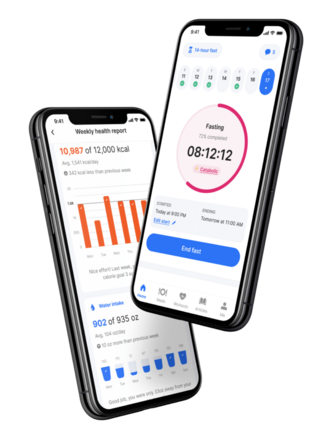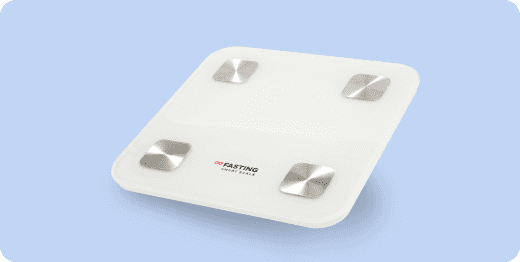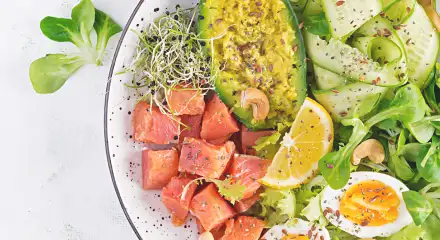Contents
Your List of Low-Calorie Fruits
Here is a breakdown of fruits that have the lowest calories.
Berries: strawberries, blueberries, raspberries, blackberries
Berries are a tiny, juicy, and colorful type of fruit that is high in vitamins, minerals, and antioxidants. They are among the healthiest foods and make an excellent supplement to any well-balanced diet. Moreover, berries can be a delicious, convenient, and low-calorie treat.
Now, let’s go over the nutritional value of each berry.
Calories per 3.5-ounce serving of strawberries — 29
- Protein: 0.7 grams
- Carbs: 7.7 grams
- Sugar: 4.9 grams
- Fiber: 2 grams
- Fat: 0.3 grams
Strawberries are also high in vitamins C, manganese, folate, and potassium, which are essential for your immune system and proper body functioning.
Calories per 3.5-ounce serving of blueberries — 56.2
- Protein: 0.7 grams
- Carbs: 14.4 grams
- Sugar: 10.1 grams
- Fiber: 2.2 grams
- Fat: 0 grams
Blueberries are also a good source of vitamin C and vitamin K, which promote heart and bone health. These berries are also a good, natural source of antioxidants.
Calories per 3.5-ounce serving of raspberries — 50
- Protein: 1 gram
- Carbs: 12 grams
- Sugar: 4.5 grams
- Fiber: 6.5 grams
- Fat: 0.5 grams
Raspberries provide more than half of the RDI for vitamin C and contain small amounts of vitamin B6, Vitamin A, calcium, zinc, thiamine, and riboflavin.
Calories per 3.5-ounce serving of blackberries — 44.8
- Protein: 1.4 grams
- Carbs: 9.9 grams
- Sugar: 5.1 grams
- Fiber: 5.4 grams
- Fat: 0.5 grams
Like all the berries mentioned above, blackberries are packed with vitamin C. They are also a great source of vitamin K and manganese.
As a general guideline, the average adult needs about 2000-2500 calories per day to maintain a healthy weight. As we have seen, all four types of berries can be considered low-calorie fruits and easily consumed as nutritious snacks that won’t interfere with your daily caloric intake.
Berries fit nicely into a healthy diet since they are nutrient-rich and high in dietary fiber, which can help regulate digestion, reduce cholesterol levels, and promote feelings of fullness and weight loss. Additionally, berries can be eaten fresh, frozen, or dried, making them versatile and a great addition to your meals and snacks.
Take a
1-minute quiz
and discover how much weight you can lose with DoFasting!

Citrus fruits: grapefruit, oranges, lemons
These juicy fruits have high water content and are considered one of the best sources of vitamin C. Let’s review the nutritional value of grapefruit, oranges, and lemons.
Calories per 3.5-ounce serving of grapefruit — 42
- Protein: 0.77 grams
- Carbs: 10.7 grams
- Sugar: 6.89 grams
- Fiber: 1.6 grams
- Fat: 0.14 grams
Grapefruit is packed with vitamins C and A, and includes potassium, thiamine, folate, and magnesium. Vitamin A plays an essential role in protecting your body against chronic inflammation and other diseases.
Calories per 3.5-ounce serving of oranges — 86.7
- Protein: 0.91 grams
- Carbs: 11.8 grams
- Sugar: 8.57 grams
- Fiber: 2 grams
- Fat: 0.15 grams
Oranges also have a high vitamin C content as well as calcium, folate, potassium, and citric acid, which helps prevent kidney stones from forming.
Calories per 3.5-ounce serving of lemons — 29
- Protein: 1.1 grams
- Carbs: 9.32 grams
- Sugar: 2.5 grams
- Fiber: 2.8 grams
- Fat: 0.3 grams
It’s no surprise that lemons are also high in vitamin C. To specify, one lemon includes about 51% of the RDI, plus citric acid and a small amount of iron. As a bonus, eating lemons helps prevent anemia, as it improves your absorption of iron from other foods.
All of the citrus fruits mentioned above have a relatively low-calorie count, which makes them a great choice if you’re trying to lose or maintain weight. You can incorporate these fruits into your balanced diet without significantly impacting your daily calorie consumption.
This fruit group fits nicely into a healthy diet since they are high in nutrients, low in calories, have a low glycemic index, and have a pleasant flavor.
Melons: watermelon, cantaloupe, honeydew melon
Sweet and juicy—that’s how most people would describe the melon food group. Melons are very hydrating due to their water content and can help to keep you full and prevent dehydration.
Calories per 3.5-ounce serving of watermelon — 30
- Protein: 0.61 grams
- Carbs: 7.55 grams
- Sugar: 6.2 grams
- Fiber: 0.4 grams
- Fat: 0.15 grams
Watermelon is a good source of vitamin C, and has a moderate amount of potassium, copper, and vitamins B5 and A.
Calories per 3.5-ounce serving of cantaloupe — 38
- Protein: 0.82 grams
- Carbs: 8.16 grams
- Sugar: 7.88 grams
- Fiber: 0.8 grams
- Fat: 0.18 grams
Cantaloupe has vitamins A, C, folate, potassium, and small amounts of magnesium, zinc, copper, selenium, and calcium.
Calories per 3.5-ounce serving of honeydew melon — 36
- Protein: 0.54 grams
- Carbs: 9.09 grams
- Sugar: 8.12 grams
- Fiber: 0.8 grams
- Fat: 0.14 grams
Honeydew melon is rich in vitamin C, and includes 53% of the RDI of this micronutrient. The fruit also is rich in vitamins B6 and K, folate, potassium, and magnesium.
Additionally, the calorie count of watermelon, cantaloupe, and honeydew melon is relatively low, meaning they can be incorporated into a healthy diet without significantly impacting daily caloric intake. Melons are also low in fat and sodium and high in essential vitamins and minerals, making them an excellent fit for a balanced diet.
Stone fruits: peaches, nectarines, plums
Stone fruits consist of fruits that have a single hard seed or pit surrounded by a fleshy outer layer. The most well-known examples are peaches, nectarines, cherries, plums, and apricots.
Let’s go over the lowest-calorie examples of these fruits.
Calories per 3.5-ounce serving of peaches — 39
- Protein: 0.91 grams
- Carbs: 9.54 grams
- Sugar: 8.39 grams
- Fiber: 1.5 grams
- Fat: 0.25 grams
Peaches are packed with vitamins C, A, E, and K. They also include potassium, niacin, copper, and manganese.
Calories per 3.5-ounce serving of nectarines — 43
- Protein: 1.06 grams
- Carbs: 9.42 grams
- Sugar: 7.89 grams
- Fiber: 1.5 grams
- Fat: 0.28 grams
Nectarines include plenty of vitamins C and B3, as well as copper and potassium.
Calories per 3.5-ounce serving of plums — 46
- Protein: 0.7 grams
- Carbs: 11.4 grams
- Sugar: 9.92 grams
- Fiber: 1.4 grams
- Fat: 0.28 grams
Plums are a good source of Vitamins C, A, and K, and they also include a moderate amount of manganese, copper, and potassium.
These are all low in calories and will not interfere with your recommended daily calorie intake. They are also low in fat and sodium.
Peaches, nectarines, and plums are nutrient-dense, high in antioxidants, low in calories, and can be used in various meals or as a snack, which makes them a great addition to a balanced diet.
Other low-calorie fruits: apples, grapes, pears, pineapples
The more options you have, the easier it becomes to maintain a healthy and balanced diet.
Let’s review other low-calorie fruits not mentioned above that you might also enjoy.
Calories per 3.5-ounce serving of apples — 52
- Protein: 0.26 grams
- Carbs: 13.8 grams
- Sugar: 10.04 grams
- Fiber: 2.4 grams
- Fat: 0.17 grams
Apples are a good source of vitamin C and potassium. Additionally, these fruits are high in quercetin (which can have anti-inflammatory, anticancer, and antidepressant effects), catechin (which promotes brain health and muscle function), and chlorogenic acid (which lowers blood sugar and promotes weight loss).
Calories per 3.5-ounce serving of grapes — 80
- Protein: 0.9 grams
- Carbs: 18.6 grams
- Sugar: 16.1 grams
- Fiber: 0 grams
- Fat: 0.23 grams
Grapes also contain vitamins C, B6, E, and K, thiamine, riboflavin, potassium, and manganese.
Calories per 3.5-ounce serving of pears — 63
- Protein: 0.38 grams
- Carbs: 15.1 grams
- Sugar: 9.69 grams
- Fiber: 2.8 grams
- Fat: 0.16 grams
Pears are a source of vitamins C, K, potassium, and copper.
Calories per 3.5-ounce serving of pineapples — 60
- Protein: 0.46 grams
- Carbs: 14.1 grams
- Sugar: 11.4 grams
- Fiber: 0 grams
- Fat: 0.21 grams
Pineapples contain vitamins C, B6, manganese, copper, thiamine, folate, potassium, magnesium, niacin, pantothenic acid, riboflavin, and iron.
As mentioned previously, since adults’ recommended daily calorie intake is approximately 2000-2500 calories, all of these fruits can be considered low in calories and a great addition to a healthy, balanced diet.
Take a
1-minute quiz
and discover how much weight you can lose with DoFasting!

Health Benefits of Low-Calorie Fruits
We know that these low-calorie foods not only contribute to your weight loss or management efforts and are packed with various nutrients. Let’s take a look at how these nutrients can impact your health.
Help with weight loss
Consuming low-calorie fruits is one of the most efficient strategies to encourage weight loss or maintain a healthy weight. This is because these fruits are naturally low in calories while abundant in vitamins, minerals, and fiber, all beneficial to overall health.
You don’t need to consume many fruits to get all the essential nutrients your body requires, which can help you create a calorie deficit and, in turn, contribute to weight loss.
Moreover, most of these fruits have a high fiber content. Fiber increases satiety and reduces cravings by slowing digestion, helping to avoid overeating.
Low-calorie fruits are also typically rich in water content. Dehydration can sometimes be mistaken for hunger, so eating hydrating fruits can help you stay hydrated and avoid overeating due to thirst.
Improves overall health
These low-calorie fruits are a beneficial addition to a healthy diet, as they can improve your overall health. Here’s how:
- High in vitamin C — which can lower the risk of heart disease, stroke, cancer, obesity, neurological disorders, and anemia.
- High in antioxidants — antioxidants aid in reducing oxidative stress caused by free radicals in your body. Oxidative stress can lead to diabetes, Alzheimer’s, heart disease, and other chronic diseases.
- Can help prevent insulin resistance — insulin resistance can lead to diabetes.
- High in fiber — it can promote the growth of beneficial bacteria in the gut.
- Regulates blood sugar — fruits can slow down glucose digestion and reduce spikes in both glucose and insulin following a carb-rich meal. Blood sugar imbalances can lead to diabetes.
- Some fruits aid in nitric oxide production — nitric oxide is a gas molecule that relaxes and dilates the small muscles surrounding your blood vessels. This results in lower blood pressure.
- Improves mental health — some fruits, like blueberries, are linked to slower cognitive decline and have been shown to improve short-term memory and motor coordination.
Boosts immunity
The low-calorie fruits provided above can boost your immune system in a few ways:
- Hydration — most low-calorie fruits are full of water, which aids in keeping the body hydrated. Hydration is essential for the immune system to operate correctly.
- Includes numerous antioxidants — beta-carotene, vitamins C, E, D, and zinc– essential components of proper immune function. Beta-carbonate increases disease-fighting cells in the body. Other antioxidants help destroy free radicals and support the body’s immune response.
- Prebiotic properties — prebiotics promote the growth of beneficial gut bacteria.
Promotes healthy digestion
Healthy digestion is essential for nutrient absorption, energy production, and disease prevention. Here’s why low-calorie fruits are beneficial for your digestive system:
- High dietary fiber content — fiber can aid in promoting regular bowel movements, prevent constipation, and boost gut health through the growth of good bacteria.
- Prebiotic properties — prebiotic fibers found in apples and berries are necessary for the formation of healthy gut bacteria.
- Natural enzymes — pineapples and other fruits have natural enzymes that aid in protein digestion.
- High water content — their water content might assist in keeping the digestive tract hydrated and preventing constipation.
How To Incorporate Low-Calorie Fruits Into a Diet
Let’s now go over the five ultimate ways to add foods low in calories to your balanced diet.
Add them as a snack
Eating low-calorie fruits as a snack is one of the easiest ways to add these nutritious foods to your diet. Snacking on fruits can provide you with a natural source of energy and help you stay focused throughout the day.
Here’s how you do it:
- Always keep your fruits accessible by washing, cutting, and storing them in containers so they’re ready when you need a snack.
- Freeze your fruits for a quick and healthy refreshment during the warm season.
- Mix your fruits to create different combinations and make your snacks more exciting and fun to eat.
You can also mix your fruits with other foods like seeds, nuts, oats, or yogurt to create a nutrient-dense and filling snack.
Include in smoothies
Smoothies are a great way to consume essential vitamins and minerals. You can make a breakfast smoothie with your favorite fruits and add some greens like kale for extra vitamins.
Here are a few smoothie recipes from the DoFasting app:
Berry smoothie with chia seeds
Nutritional value:
- Energy: 196 kcal
- Fat: 7.1 g
- Carbs: 24 g
- Protein: 12.3 g
Ingredients:
- Almond milk, unsweetened — 1 cup
- Strawberries — 1/2 cup
- Blueberries — 1/2 cup
- Chia seeds — 1 tbsp
- Isolated soy protein — 1/2 tbsp
- Stevia liquid
Instructions:
- Put all the ingredients in a blender and blend until smooth.
- Pour the smoothie into a glass.
Oat and apple smoothie
Nutritional value:
- Energy: 199 kcal
- Fat: 1.8 g
- Carbs: 39 g
- Protein: 8.9 g
Ingredients:
- Water — ¾ cup
- Apple — 1 small, chopped
- Greek yogurt, 0% fat — ¼ cup
- Oats, dry — 2 tbsp
- Ground cinnamon
Instructions:
- Remove the core from the apple. Chop the apple into several pieces.
- Blend all the listed ingredients together, and your smoothie is ready. Add some water if the smoothie is too thick.
The DoFasting app contains over 5000 healthy, easy-to-make recipes to help you lose weight or keep you in shape. You can type in the fruit you want to eat in the search bar, and the app will list all the meals you can make with it.
Top off salads and yogurt
Fruits can be great toppings for your salads or yogurt—they can give your meals sweetness and flavor without adding too many calories. Here are a few ways to do it:
- Yogurt — mix fresh or frozen blueberries, raspberries, apples, peaches, or nectarines into your favorite yogurt. Just remember to use unsweetened options like plain Greek yogurt, so you don’t have unnecessary sugars to the mix.
- Salads — boost the nutritional value of your salads by adding low-calorie fruits such as berries, pears, or oranges. You can add a variety of fruits to your salads to give them a sweet and refreshing taste.
Fruit toppings can add texture and flavor to your meals while boosting your vitamin and mineral absorption.
Use as a low-calorie sweetener
Fruits include natural sugars such as fructose, glucose, and sucrose, which give them that natural sweetness that makes them so delicious.
If you have a sweet tooth, low-calorie fruits can help you limit your sugar intake while allowing you to enjoy sweet foods.
Here are some ideas:
- Use fresh or frozen fruits in your meals
- Use juicy fruits to make juices for beverages, smoothies, and sauces
- Use fruit purees as a sweetener in baking and cooking
Take a
1-minute quiz
and discover how much weight you can lose with DoFasting!

Low-Calorie Fruits: Key Takeaways
Fruits are packed with essential vitamins and bioactive compounds that offer a broad range of health benefits for your body, making them a great addition to any diet.
It’s important to choose fruits low in calories, such as berries, peaches, apples, and melons, for weight management. To easily incorporate them into your eating habits, add them to your salads, smoothies, and bowls, and mix them with other nutrient-dense foods.
See how DoFasting will improve your life
Find out what works for you with this 60-sec quiz approved by our experts and get your personal revolutionary fasting assistant.
Start the Quiz













